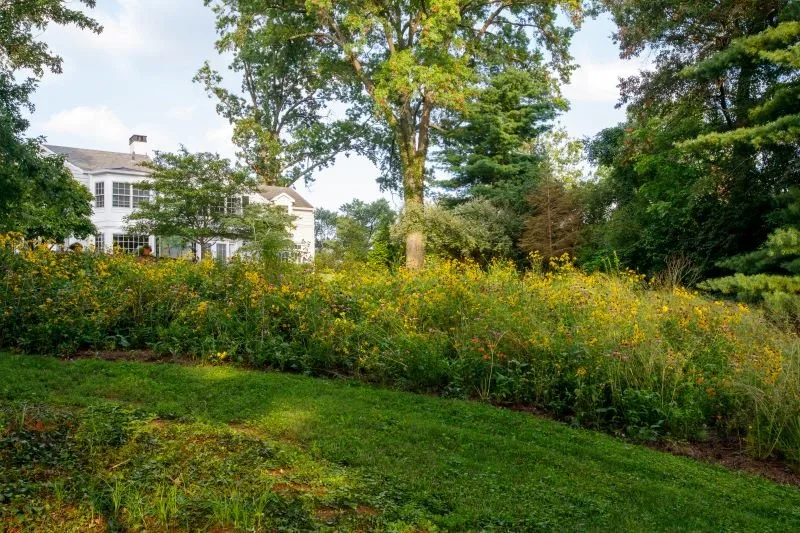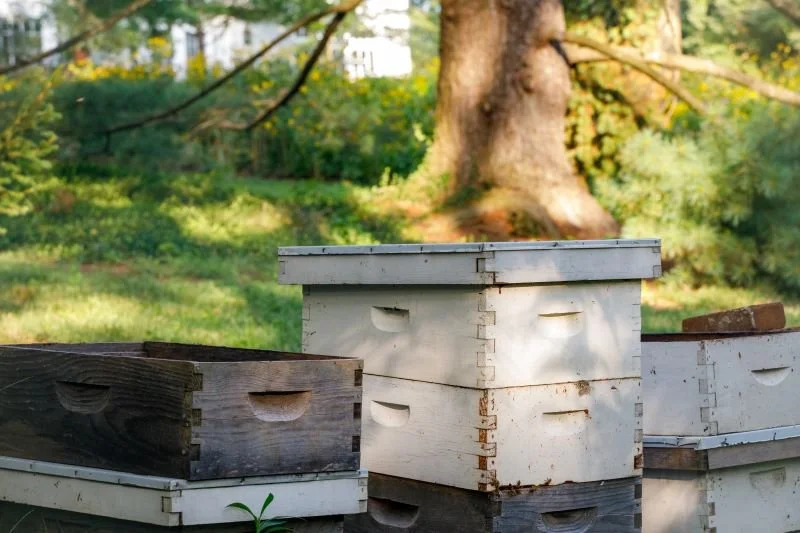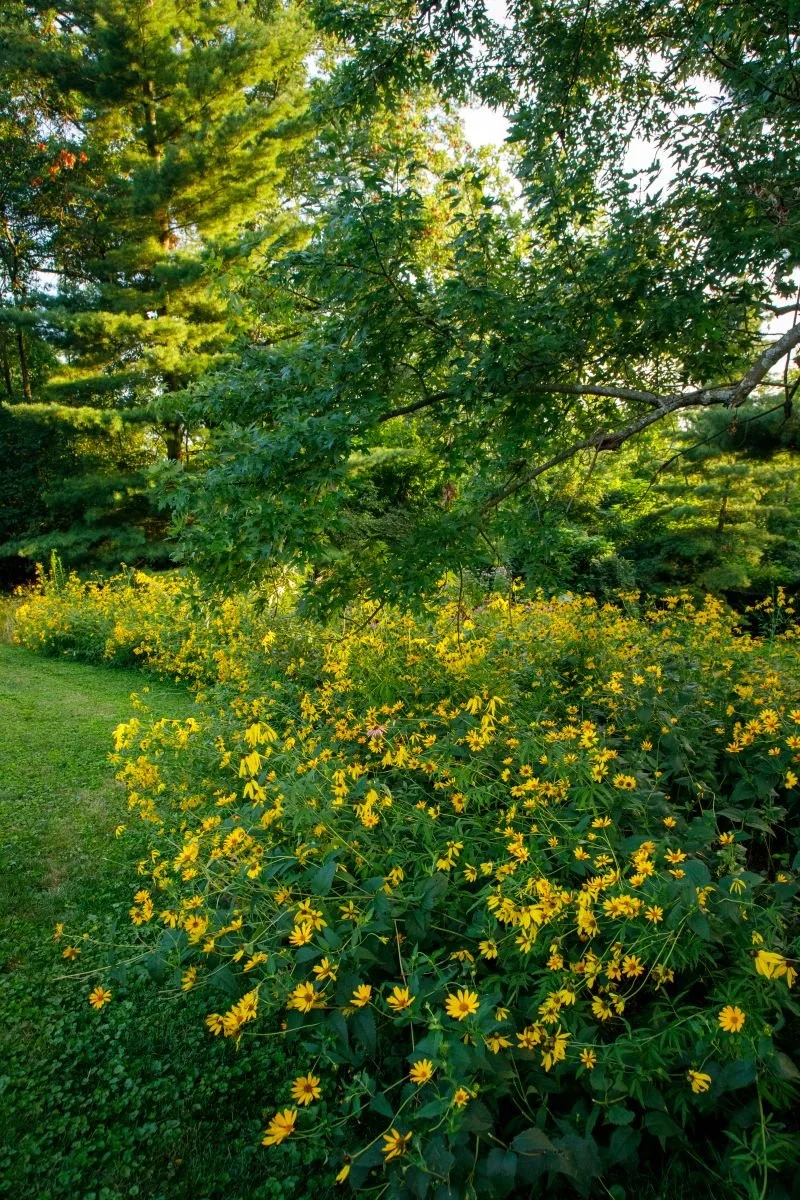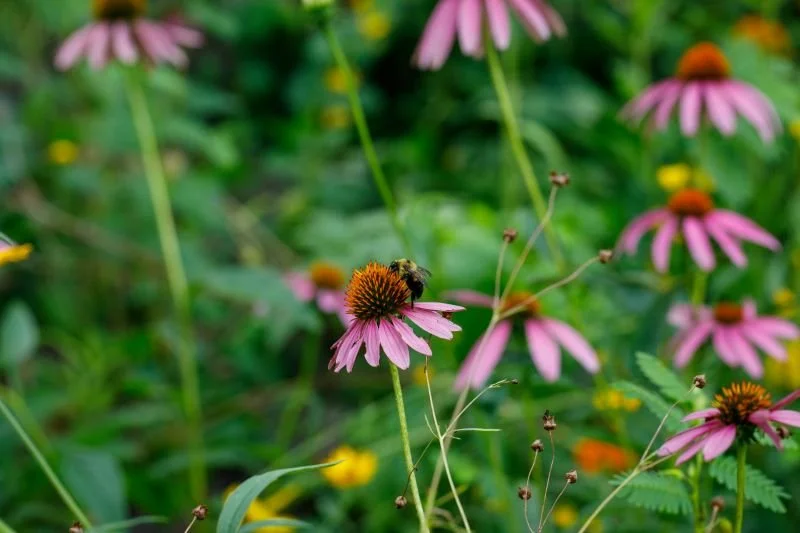AFTER: Now in its fourth year, a pollinator meadow in Indian Hill provides gorgeous pops of color while sustaining a wide variety of pollinators
“OLO was recommended by my beekeeping friend when we decided to become a bee yard. We were looking for more pollinators for the bees and decided we did not need 3 acres of grass. We love working with a company that focuses on native plants and pollinators. Additionally, they are very willing to listen to my suggestions and help me understand what works best for my yard. ”
The Challenge
When one of our land care clients reached out to us, she was hoping to replace a chunk of her large backyard with pollinator habitat.
She loves the large property, which allows her to pursue her passion for beekeeping. However, she wanted to convert some of the turf to gardens to reduce the labor involved in maintaining her land. She envisioned a pollinator-friendly garden in the backyard: a win-win for her and her bees.
AFTER: The meadow is located near the client’s bee boxes, ensuring plenty of sustenance for her beekeeping charges.
As she dreamed of a pollinator meadow, our client was faced with several additional challenges.
The backyard was on a slope, which required special considerations in terms of garden design. The area where she wanted to install the garden was fairly shady, which constrained the plant palette. And she wanted to create a new garden space that would feel cohesive with the existing landscaping.
AFTER: The new meadow creates visual interest at the woodland’s edge and seamlessly integrates with the pre-existing landscaping.
The Transformation
We began work on this meadow project in February 2022, and it’s been wonderful to watch this vision come to life over time.
We started by determining where to locate the garden so that it would work with the slope and feel like an extension of the existing landscaping—as if it had always been part of the yard.
We then created the meadow’s footprint via sheet mulching. This entails laying down cardboard and aged hardwood mulch, which gradually kills off grass and other undesirable plants. This process also creates clean edges that clearly distinguish the meadow as an intentional planting and contribute to a tidy appearance.
AFTER: A tidy edge maintains a neat appearance and defines how the meadow integrates with the rest of the backyard.
Once it was time for planting, we used a seed mix to cover the meadow at scale. The native seed mix was carefully selected based on the desire for robust blooms for pollinators combined with the relatively shady conditions. The mix contained both fast-establishing annuals, which appeared in the first year, as well as perennials that fill in and sustain the meadow over time.
Now in its fourth year, the meadow has reached its full glory.
“One of my favorite things about our meadow is the wildness of it. From afar it looks like a natural meadow, but up close there is so much to see, from the buds and flowers to all the insects that are enjoying it.”
Perennial plants are well established and densely packed, which suppresses weed pressure. Now that it has grown into its mature form, maintenance is almost non-existent. The meadow requires no supplemental watering, and it only needs to be mowed once a year.
AFTER: Pollinators feast on a variety of native wildflowers.
Pollinators—both native bees and butterflies and our clients’ happy honeybees—flock to the meadow’s blooms. Our client enjoys the vibrant views from her house and from elsewhere in the yard. Plants, pollinators, and people are thriving together in this landscape.
AFTER: A happy native bee among native wildflowers.






